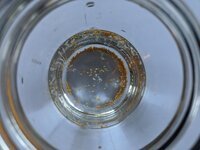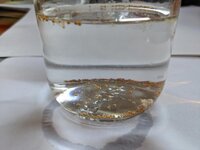TorontoJoe
Administrator
Casalore --- Banana Tropical Berry
What's the story behind this one?
What's the story behind this one?
Strawberry jam? Wow, I have mainly gotten a little berry flavor. IAM still looking for that definite deep, rich strawberry flavor. Not from this one cause I don't have this one but I will have to keep an eye out for it now. Thank youPortugal 80 strawberry jam with a hint of acidity towards the end.
Sure no problem!A couple of your listed figs picked my interest but Rionon Santana did more. Do you happen to have any pics and where did you get it from?
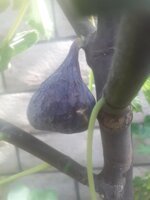
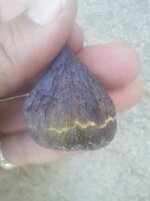
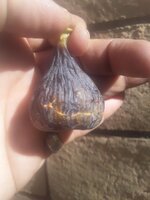
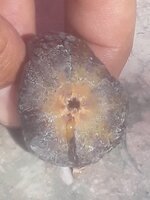
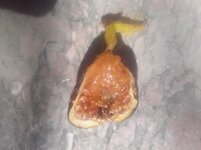
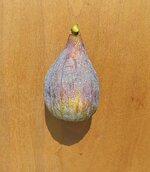
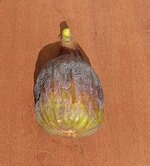
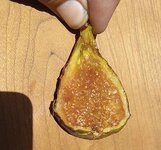
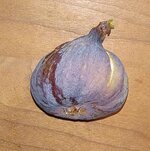
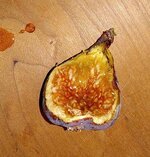
Well even though it's not described as having these flavors I tasted hints of banana along with pineapple and berry tones.Casalore --- Banana Tropical Berry
What's the story behind this one?
I was impressed by JHA - for some reason I thought there were waaay better Adriatics than JHA (without ever having tasted one) and I also sampled it during mid-Fall so I think you're correct that it does better outside of the summertime.I've gotten some pure candies from Adriatic types. JHA had a nice twang to it as well. Although in hotter weather it wasn't as good for me...
#1 search result from Google search for 'Tropical Berry':Casalore --- Banana Tropical Berry
What's the story behind this one?
Thank you for your input. Do you know if it's a common fig?Sure no problem!
Here's my post about RS:
Ladies and Gentlemen, allow me to introduce Rionon Santana : a new CA Seedling.
I found this plant at a dried up riverbed a few miles from my location over 2 1/2 years ago (roughly) and I was banking on luck that it was a fig tree.
After getting down and breaking off a few branches I manage to get one "cutting" to start growing and after a couple of years of pure growth; never showing me a swollen bud or anything - just a cool looking leaf pattern plant that was probably some wild tree (since it never showed me figs - breba or main crop).
I gotta say I was surprised! I couldn't believe I actually got me a decent fig with the odds against finding a good to great fig.
Ok now onto the description...
It had a slight figgy smell to it as well a a faint sweetness - so I took it as a good sign.
It was jelly soft on the tree; but I actually had to put a little muscle to snap it off - It was like a little speed bag when I was flicking it.
It managed to develope a crack that went almost around the entire fig and had a small to medium eye, which the other ones had small to tight eyes.
Here's when I felt like I struck gold, so as soon as it was cutting time, I place the fig down onto the cutting board and when I began to cut it the skin (although thin) didnt want to split so easy and when I gripped it - juice ran out!
I was like - tell me it didn't spoil; so when I proceeded to cut it, more came out! Then I decided - screw it and dipped my finger into the slightly pinkish clear liquid and didnt smell any kind of rot, I tasted it.
It was sugar water ! I couldn't believe it! My fingers became as sticky as syrup when it dried and now it was time for the taste.
This thing was very sweet - super juicy; again despite being wrinkly with a notes of honey, syrup (caramel-ish?) and had slight notes of melon and mango (the last breba I tasted had a more pronounced mango flavor to it).
This is describing the first 5 pics (same fig) - the others did not produce the sugar water but were just as sweet and sticky.
Yes -I did a seed sink test with fig #3 (last 2 pics on the previous post) and all seeds floated.Thank you for your input. Do you know if it's a common fig?
can you tell me more about the seed sink test? I searched this forum and then google and still don't know much. google has lots of seed sink test info, but not fig specific. any links would also be great. thanks!Yes -I did a seed sink test with fig #3 (last 2 pics on the previous post) and all seeds floated.
The first fig (5 pics) on the previous post could have been caprified based on the sugar water but unfortunately I didn't do a seed sink test on it.
Below is the aforementioned fig #3 test pics:
If common varieties are hand pollinated, you will get some viable seeds that will sink.very interesting, thanks. so by "viable seed" I assume you mean a seed in a caprified fig that has been pollinated by a wasp. So if all the seeds in a fig float, that would mean it's a common fig and no wasp has pollinated any of the seeds. Or possibly it's a smyrna type fig, but grown in a place without wasps, so the fig didn't get pollinated even though it needs pollination to produce the tastiest figs. The only seeds to sink would be from trees that are not "common" and also are grown where there are wasps. Do I understand that correctly?
Common or Smyrna figs and even Capri (since they do have female flowers as well)very interesting, thanks. so by "viable seed" I assume you mean a seed in a caprified fig that has been pollinated by a wasp. So if all the seeds in a fig float, that would mean it's a common fig and no wasp has pollinated any of the seeds. Or possibly it's a smyrna type fig, but grown in a place without wasps, so the fig didn't get pollinated even though it needs pollination to produce the tastiest figs. The only seeds to sink would be from trees that are not "common" and also are grown where there are wasps. Do I understand that correctly?
very interesting, thanks. so by "viable seed" I assume you mean a seed in a caprified fig that has been pollinated by a wasp. So if all the seeds in a fig float, that would mean it's a common fig and no wasp has pollinated any of the seeds. Or possibly it's a smyrna type fig, but grown in a place without wasps, so the fig didn't get pollinated even though it needs pollination to produce the tastiest figs. The only seeds to sink would be from trees that are not "common" and also are grown where there are wasps. Do I understand that correctly?
Smyrna figs require pollination to hold onto fruit and for them to mature to size. So you cannot have an unpollinated smyrna fig with seeds you can collect. Unpollinated smyrna figs will drop before they can grow into edible fruit and seeds do not develop in them.very interesting, thanks. so by "viable seed" I assume you mean a seed in a caprified fig that has been pollinated by a wasp. So if all the seeds in a fig float, that would mean it's a common fig and no wasp has pollinated any of the seeds. Or possibly it's a smyrna type fig, but grown in a place without wasps, so the fig didn't get pollinated even though it needs pollination to produce the tastiest figs. The only seeds to sink would be from trees that are not "common" and also are grown where there are wasps. Do I understand that correctly?
What Joe said above and here are some pictures for you so you can see how to do it if you ever want to. You need to remove as much pulp as you can without crushing the seeds because the pulp can mess up results. You also need to check the seeds right away and not let them sit in water for a while before checking.can you tell me more about the seed sink test? I searched this forum and then google and still don't know much. google has lots of seed sink test info, but not fig specific. any links would also be great. thanks!

